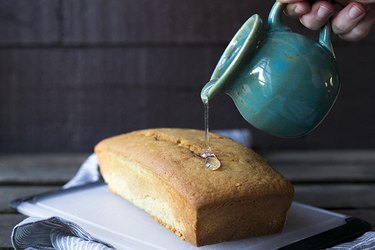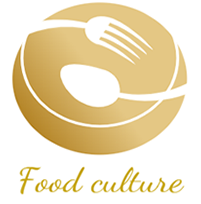
A sweet, sticky granulated sugar glaze is that extra little element that can take a dish from a 9.5 to a perfect 10. On its own, a sugar glaze can be used to add sweetness and moisture to things like lemon bread, fruit muffins and coffee cake. Infusing the glaze with additional flavors adds even more depth of flavor to your favorite baked goods. There are a few ways to create this topper, and they're all super simple.
Video of the Day
A Basic Granulated Sugar Glaze
There are a few ways to make granulated sugar glaze. Heating granulated sugar with any kind of liquid will create a basic glaze. It's necessary to heat the glaze because this is what causes the sugar crystals to dissolve, creating a smooth texture. A warm sugar glaze will start to harden pretty quickly, so if you're going to drizzle it over baked goods, take them out of the oven before starting your glaze.
One of the easiest ways to create a flavor-packed glaze is to combine one part lemon juice and two to three parts granulated sugar in a small saucepan over low heat. (About 6 tablespoons of lemon juice and 12 tablespoons of sugar should yield enough glaze to drizzle over a loaf of bread or a small cake.) Heat and stir the mixture just until it's warm but don't let it boil. Add lemon zest to intensify the citrus flavor.
If you don't want lemon flavor, make a basic granulated sugar glaze with two parts sugar and one part water or milk. Again, heat the mixture over low heat just until the sugar dissolves. If you're striving for true decadence, make a glaze of sugar and heavy cream. (If you do use milk or cream, your baked goods should be stored in the refrigerator.)
Granulated Sugar Glaze Variations
Just a splash of an extract can add a ton of flavor to a sugar glaze. Vanilla extract is the obvious choice, but you may want to experiment with others too. For example, add banana and coconut extracts to a glaze made for pineapple cake or drizzle a glaze flavored with rum and coconut extracts over a homemade rum cake. Start by adding just a drop of an extract to your glaze and add more according to your tastes.
Some glaze recipes also call for the addition of melted butter. While it's not strictly necessary, adding a tablespoon of butter to your glaze will certainly make it richer. The glaze may start to crack or congeal a bit as it cools.
Adapting a Powdered Sugar Recipe
Many sweet and sticky glaze recipes call for powdered sugar instead of granulated. A glaze made with powdered sugar will taste like one made with granulated sugar but will have more of an opaque white sheen and a thicker texture because this sugar is made with cornstarch.
If you're following a recipe that calls for a powdered sugar glaze but you only have granulated sugar, there's a quick and easy way to make a decent substitution. To replace 1 cup of powdered sugar, combine 1 cup of granulated sugar with 1 teaspoon of cornstarch in a blender. Blend the mixture until it's a fine powder.
Because of its fine texture, powdered sugar tends to dissolve when it's combined with liquid; no heat is necessary. So, if you do make a substitute with granulated sugar, simply stir together the glaze ingredients in a bowl. There's no need to warm the mixture unless it tastes grainy.




